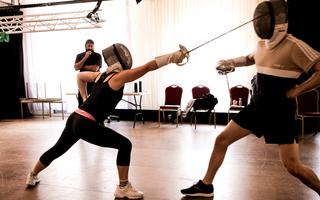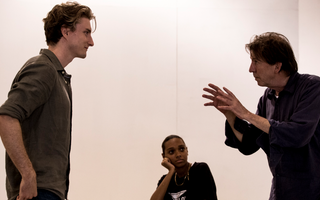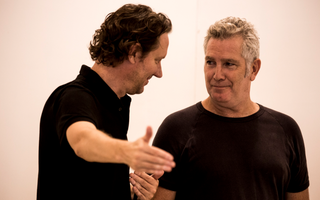 On Stage
On Stage
A soliloquy is a speech made by a single character, conveying their innermost thoughts directly to an audience. Recognising how these speeches work is critical to your understanding of Hamlet.
A soliloquy is effective in conveying information about characters because:
- It provides an audience with an emotional x-ray of the character.
- It is an inclusive experience for an audience, it invites us into the world of the play.
- It deconstructs for us what has just happened or is about to happen.
Working initially in pairs, read the following soliloquies and choose the one that interests you most:
- Hamlet – Act 1 Scene 2: O that this too too solid flesh would melt …
- Hamlet – Act 2 Scene 2: O what a rogue and peasant slave am I …?
- Hamlet – Act 3 Scene 1: To be or not to be, that is the question …
- Claudius – Act 3 Scene 3: O my offence is rank, it smells to heaven …
With your partner, note and identify the use of the following techniques in every soliloquy:
A. SITUATION
Identify the given circumstances using the fundamental questions in The Play's The Thing.
B. WHAT IS THE CENTRAL ARGUMENT OF THE SPEECH?
Every speech is a debate. It offers a central statement or question early on, then sets about arguing and debating it from a number of points of view, finally settling on some sort of conclusion. Clearly mark in your speech these different ‘beats’. These define the conflict of the speech
C. QUESTIONS
The character asks him/herself, and therefore the audience, a series of questions that allow the speech to keep moving on to new ideas. Mark them.
D. CHANGES IN THOUGHT
Mark in with a line (eg. " / ") whenever you can identify a new thought or change of idea.
E. LISTS
Every speech involves a listing of ideas that build logically on each other. They help drive the energy and rhythm of the speech. Note how lists are used.
F. IMAGES
Circle and create a mental (or even a drawn) picture of the images the character describes in the speech. There will be many powerful thought-pictures.
G. STAKES
How much does it matter? What is at stake for the character? Play the stakes.











